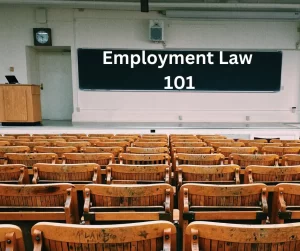
Under Washington State law, what is a “complaint” within the context of legal proceedings? Here’s my point of view.
(IMPORTANT: This article is for informational purposes only and is based upon my point of view. Due to the rapidly changing nature of the law, we make no warranty or guarantee concerning the accuracy or reliability of the content in this article. No content on this site, regardless of date, should ever be used as a substitute for direct legal advice from your attorney. Please review our Disclaimer|Terms of Use|Privacy Policy before proceeding.)
INTRODUCTION: THE COMPLAINT
In Washington State jurisprudence, a “complaint” refers to a formal written document that commences a civil lawsuit. This crucial document is typically filed by the plaintiff, the party initiating the legal action, against the defendant, the party being sued. The complaint serves as a detailed statement of the plaintiff‘s claims, outlining the legal basis for their grievances and the specific relief or remedy they seek from the court. Essentially, it marks the beginning of the legal process in Washington State.
COMPONENTS OF THE COMPLAINT
A well-constructed complaint in Washington State must encompass specific elements to be legally valid and sufficient to initiate a lawsuit. These essential components include:
1. Caption:
The complaint begins with a caption that identifies both the court and all the parties involved in the lawsuit, listing the plaintiff(s) and defendant(s). This section provides clarity about the parties and their roles in the legal dispute.
2. Jurisdiction and Venue:
It is imperative for the complaint to specify the court’s jurisdiction over the matter and the appropriate venue where the lawsuit should be heard. This ensures that the case is heard in the correct jurisdiction.
3. Statement of Facts:
The heart of the complaint lies in the statement of facts. This section presents a comprehensive narrative that details the events leading to the dispute. It typically answers the fundamental questions of “who,” “what,” “when,” “where,” and “how” regarding the alleged wrongdoing.
4. Legal Claims:
Within the complaint, the plaintiff articulates the legal claims or causes of action they are pursuing. These claims must be firmly grounded in Washington State law (or other relevant/applicable law) and must be presented with sufficient detail to provide the defendant with a clear understanding of the allegations.
5. Request for Relief:
The complaint typically concludes with a segment that outlines the specific remedies or relief sought by the plaintiff. This may include monetary damages, injunctive relief, or other forms of legal remedies available under Washington State law.
CONCLUSION
In Washington State jurisprudence, a “complaint” serves as the bedrock of a civil lawsuit, marking the initiation of legal proceedings. This formal document elucidates the plaintiff’s grievances, legal claims, and the relief sought from the court. Understanding the components and significance of a complaint is essential for individuals navigating the legal landscape in Washington State. It signifies the initial step in a legal journey that may ultimately lead to justice, resolution, and the protection of individual rights in a state that upholds the rule of law.
READ OUR RELATED ARTICLES
We invite you to read more of our articles related to this topic:
» Employment Law 101: Alternative Dispute Resolution
» Employment Law 101: Definition of Pleading
» Employment Law 101: Depositions
» Employment Law 101: Discovery (WA State)
» Employment Law 101: Legal Theory
» Employment Law 101: Mediation
» Employment Law 101: Remedies
» Employment Law 101: Statute of Limitations
» Employment Law 101: Summary Judgment
» Employment Law 101: The Defendant
» Employment Law 101: The Plaintiff
» Employment Law 101: The Summons
LEARN MORE
If you would like to learn more, then consider contacting an experienced attorney to discuss your case. This article is not offered as legal advice and will not establish an attorney-client relationship with Law Office of Gregory A. Williams, or the author of this article; please refer to our Disclaimer | Terms of Use | Privacy Policy for more information.

